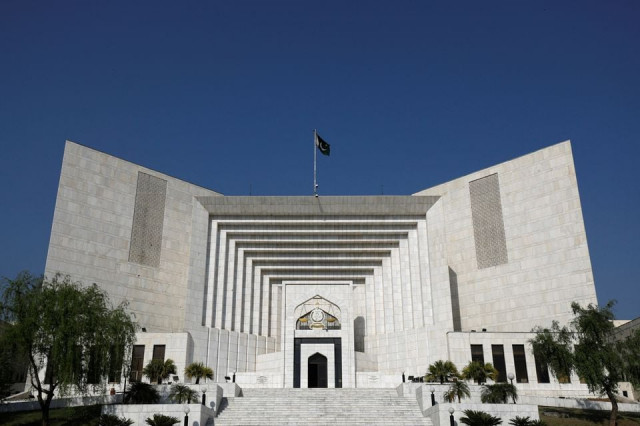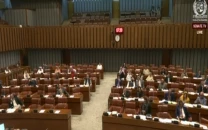SC orders responsible, sustainable mining
Says climate-proof practices must be adopted to minimise environmental impact

The apex court of the country has said the mining sector must adopt a climate-proof policy and conduct mining in a responsible and sustainable manner to minimize its impact on the environment.
"While mining is an essential part of the economy, it must be conducted in a responsible and sustainable manner to minimize its impact on the environment,” said a five-page judgement issued on Wednesday by a division bench of the Supreme Court.
Comprising Justice Syed Mansoor Ali Shah and Justice Ayesha Malik, the bench was hearing a petition filed against an order of the Lahore High Court (LHC). The petitioner had challenged in the public interest the lack of environmental approvals for grant of small-scale mining licenses and leases.
The verdict—authored by Justice Malik—said by implementing best practices, adhering to strict guidelines and developing a climate-proof mining policy, it could be ensured that mining continued to provide for the economy while also protecting the health of our planet and its inhabitants.
Read more: After Punjab polls verdict, PTI moves SC for elections in K-P
“Economic growth is important, but it must be achieved in a way that is sustainable and respectful of the natural systems that support it.”
The judgement noted that the Mines and Minerals Department (MMD) must look into the impact of a proposed mining project on the environment before starting the process.
It said at the time of bidding a bidder must know the terms set out in the Initial Environmental Examination (IEE) or the Environmental Impact Assessment (EIA) that they are bound by and are required to comply with the mitigation measures set out in the Environmental Management Plan (EMP).
The Initial Environmental Examination (IEE) means initial study, survey, research, and analysis of data to estimate initial impacts on the environment and society, including impacts on health which may arise from a project.
The Environmental Impact Assessment (EIA) is a tool used to assess the significant effects of a project or development proposal on the environment while the Environmental Management Plan (EMP) describes how an action might impact the natural environment in which it occurs.
Read CJP Bandial turns down AGP Awan's request for full court in polls delay case
An EMP also sets out clear commitments from the person or organization taking the action on how those impacts will be avoided, minimised and managed so that they are environmentally acceptable.
"Hence, it is the Mines and Minerals Department (MMD) that is responsible for obtaining these reports before initiating the process for bidding on the said projects.
“In this regard, it would be useful for the MMD to provide guidelines and SOPs [Standard Operating Procedures] to facilitate this process and also provide penalising provisions within the license or lease for any violation of the EMP so as to ensure compliance.”
It said Pakistan has the world’s second-largest salt mines and coal reserves, fifth largest copper and gold reserves, and second largest coal deposits with gravel, sand, and limestone deposits widely distributed in all four provinces.
“The country’s GDP [Gross Domestic Product] owing to mining alone has increased from Rs309,823 million in 2020 to Rs663,084 million in 2021-2,” it added.
The verdict stated that there is huge potential in the mining sector for the country’s economy; however, it cannot be achieved at the expense of the environment.
"We have examined the regulations promulgated vide notification dated 16.12.2022. As per these regulations, projects listed in Schedule-I(D) require an IEE which include the commercial extraction of sand, gravel, limestone, clay, sulphur, and other minerals not included in Schedule-III and with a total cost of less than Rs500 million,” it stated.
"It also includes exploration of coal, gold, copper, sulphur, and precious stones. Similarly, projects listed in Schedule-II(C) require an EIA which includes the mining and processing of coal, gold, copper, sulphur, and precious stones.
“Hence, the regulations clearly specify the requirement of an IEE or the EIA, which is a fundamental and basic step before a project starts, so as to ensure that an adverse effect on the environment has been considered and addressed,” it added.
"This is because even the exploration and mining of minor minerals has an adverse impact on the environment, which includes deforestation, pollution, production of toxic wastewater, loss of habitats, and disruption of the ecosystem.
“In particular, with reference to sand mining; deforestation, loss of biodiversity, soil erosion, and acid drainage are some of the serious environmental impacts, which have to be given due consideration.
“Surface mining creates health hazards for miners and local communities as well as gives rise to air pollution and produces toxic wastewater, and causes droughts all of which must be catered for.
“In this context, climate change is one of the biggest global threats and the combination of surface mining and climate change becomes a serious threat to the ecological system,” it stated.
The verdict said the mining sector must adopt a climate-proof policy that must consider how climate change will impact mining areas so that the climate change risks are integrated into the environment assessment.
“Therefore, without an IEE or an EIA, these matters are totally neglected; hence, special attention must be given to all environmental aspects even with reference to the mining of minor minerals,” it added.



















COMMENTS
Comments are moderated and generally will be posted if they are on-topic and not abusive.
For more information, please see our Comments FAQ